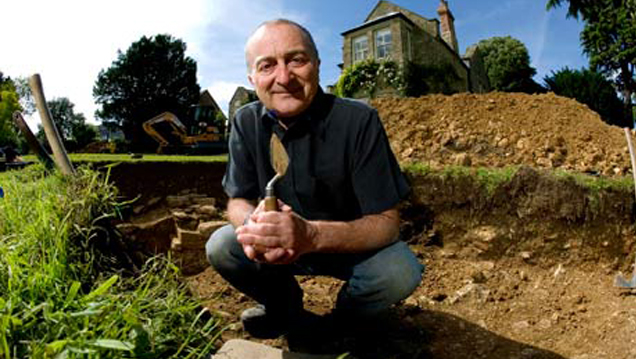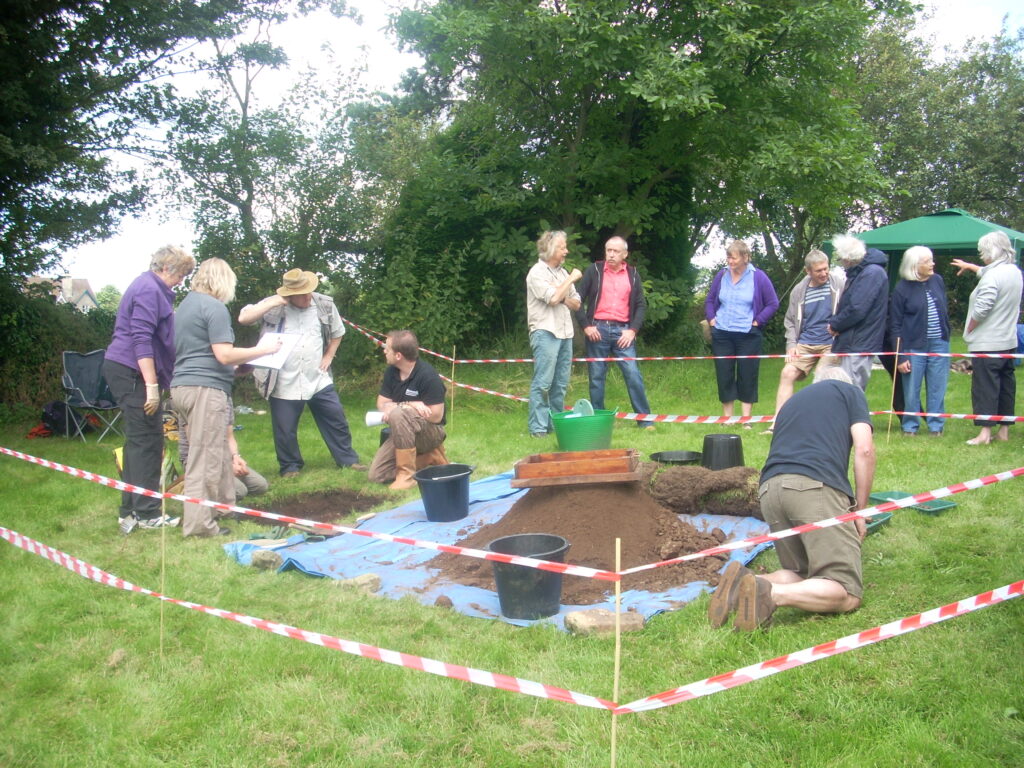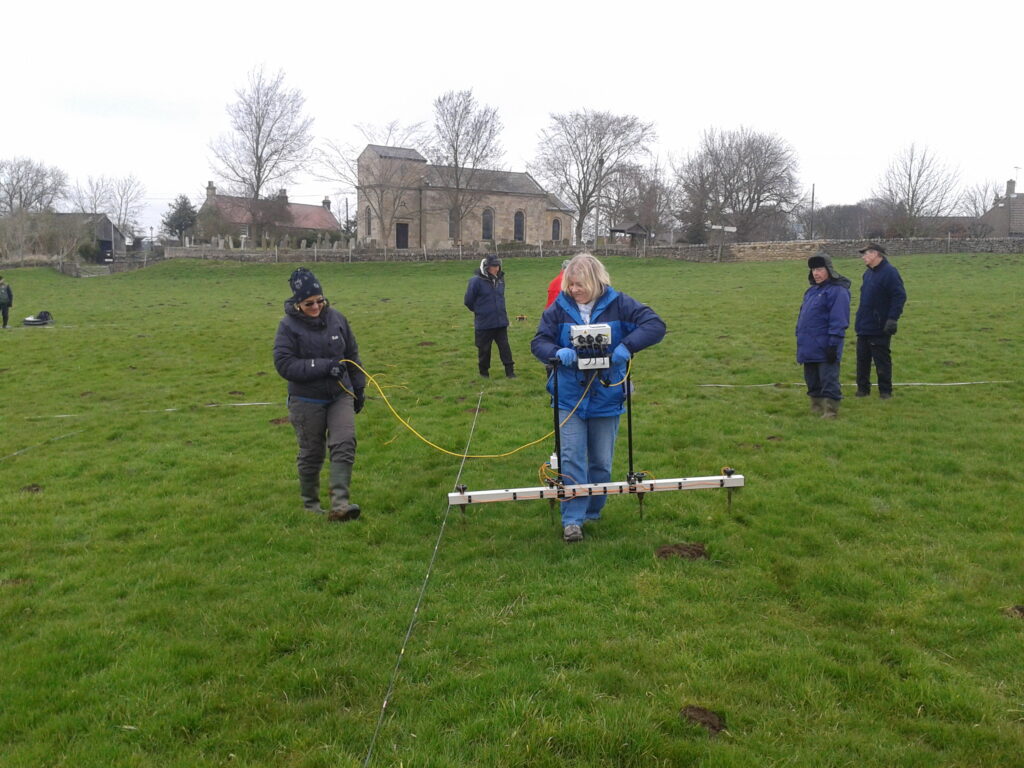As the Time Team trowels are put away for the last time, archaeologist Matthew Beresford looks back at the lasting legacy that caught the nation’s imagination.
Sunday 24th March 2013 saw Time Team, the nation’s favourite archaeology programme, aired for the last time (although there are some ‘one-off specials’ to come). For twenty years we have avidly tuned in to watch Tony and the gang explore over two hundred sites, covering pretty much every period of British History. Ratings in the millions, key discoveries and a vast army of armchair archaeologists…so what went wrong?
Francis Pryor’s quite poignant answer to that question was, simply, ‘nothing went wrong…twenty years of primetime TV? I think you mean what went right, don’t you?’. He has a point.
Exactly what Time Team meant to British archaeology was perfectly summed up by Sarah Dempster’s online article for The Guardian (Saturday 23rd March, 2013) in which she praised Time Team’s ‘blend of historical mystery and arse-scratching accessibility’. For me, that was its genius, its pull. Somehow, it managed to turn a rather stuffy subject that hardly anyone understood (no, archaeologists do not look for fossils, and hardly any dig up dinosaur bones!) into something fashionable and fun. More than that, they explained in quite simple terms what they were doing, why they were doing it and what they were finding. And if they didn’t find anything, or things were not as they first thought, they did not pretend or change it ‘off camera’, they told us the truth!

Time Team’s Tony Robinson
Source: theguardian.com/uk
Again, there was part of Time Team’s success – it was such an honest concept, and Tim Taylor and his team chose the archaeologists perfectly. Tony Robinson, Mick Aston, Phil Harding, Stuart Ainsworth, John Gater, Carenza Lewis not to mention the dozens of local archaeologists and specialists that were involved. That team and the honest formula they all bought in to had the nation hooked, right from day one. I remember working on a site in York back in 2002, and Time Team had dug part of it first for the Time Team Live! Episodes, and the sheer amount of visitors to the site was astonishing. Applications to study archaeology at one of Britain’s universities also saw a dramatic boost from the late 1990s onwards. No-one can deny that Time Team had a big part to play in that.
We have all got opinions on what might or might not have gone wrong with Time Team – new team members, a dumbing down of the archaeology, too much emphasis on re-enacting or recreating, or perhaps, as Mick Aston put it, ‘too much faffing about’. The truth of the matter is that whatever happened, it was addressed and changes were made to try and save it. But the damage had been done – Mick had left, viewing numbers dropped and the powers that be no longer saw it as sustainable.

Community excavation at Elmton, Derbyshire during the Elmton Research Project
Source: ©M. Beresford
However, as an archaeologist who spends pretty much all of his time working in the community, with the community, I have yet to meet one person who has said to me that Time Team is no longer relevant. Yes, many have recognised faults creeping in and a change of direction, but the nation of armchair archaeologists that Time Team created are forgiving enough to give it another chance. Actually, to use the term ‘armchair archaeologists’ is rather out of date now, because although there were literally thousands and thousands of them avidly watching Tony and the gang every week, it soon began to dawn on us that archaeology was accessible, arse-scratchingly accessible to use Dempster’s phrase, just like the Time Team were showing us.
What happened was that the nation then put down the TV remote and took off their slippers, picked up a trowel, pulled on a pair of boots and went and got involved in some real archaeology. And although that was Time Team’s legacy, to almost single-handedly show us that archaeology really is for all, in many ways it was its downfall. Instead of tuning in to watch TV archaeology, we were all too busy freezing in a muddy field somewhere. The current wealth of Community Archaeology groups and projects owes a lot to Time Team, and that can only be a shining testimony to its success.
The real danger that lies ahead, however, is assuming that archaeology is not a skilled subject. Behind every successful community project you will find a number of professional archaeologists that work with and support the public and help them learn the skills they need. What Time Team did was create a national platform that showcased those skills and the various techniques needed to work in archaeology (for example who knew what geophysics was before they saw Stuart trampling across a field for hours on end?). But, that platform has now been removed from public view. What the majority of the public perhaps do not see is that at the same time our national framework of Continuing Education (which, incidentally, Mick Aston was a huge pioneer for) has also largely disappeared, meaning those budding archaeologists who left their armchairs behind and gained some academic knowledge of the subject to support the practical aspects can no longer do this, well not as easily anyway.

Community archaeology group carrying out geophysics
Source: ©M. Beresford
We are also seeing a dramatic decline in university archaeology departments, largely due to the significant rise in tuition fees, which will have a knock-on effect down the line. This means that we are also limiting the next generation of archaeologists, as less and less people will be able to take archaeology at university level. Average tuition fees are around £9000 per year, meaning course fees alone come in at close to £30,000. The average annual wage for a field archaeologist is around £14,000. The maths just do not stack up. So, that will place more emphasis on our plethora of public archaeologists, the ones that Time Team helped to create, but if we don’t produce the skilled archaeologists to support them, where will that leave us in years to come?
It’s not all doom and gloom, far from it, and we must not let ourselves become negative, but the demise of Time Team after so long shows that nothing is certain in life, let alone in archaeology. All subjects and professions have to adapt and move with the times, yet the success of Time Team was largely because it took us on an adventure, no-one knew what was going to turn up, and that is still one of archaeology’s biggest pulls. I am not quite certain whether Phil was modelled on Indiana Jones (albeit with a bumbag rather than a leather satchel) but his passion and excitement really encapsulated everything that was great about Time Team – ‘will you look at that!’.
The best eulogy for Time Team, other than the endless success stories of community archaeology projects, again comes from Sarah Dempster’s article, when she described them as being ‘a national treasure that charmed and educated through the simple expedient of bejumpered boffins at toil in soil….history delivered by experts who loved what they did and wanted us to love it too’. And oh how we did!